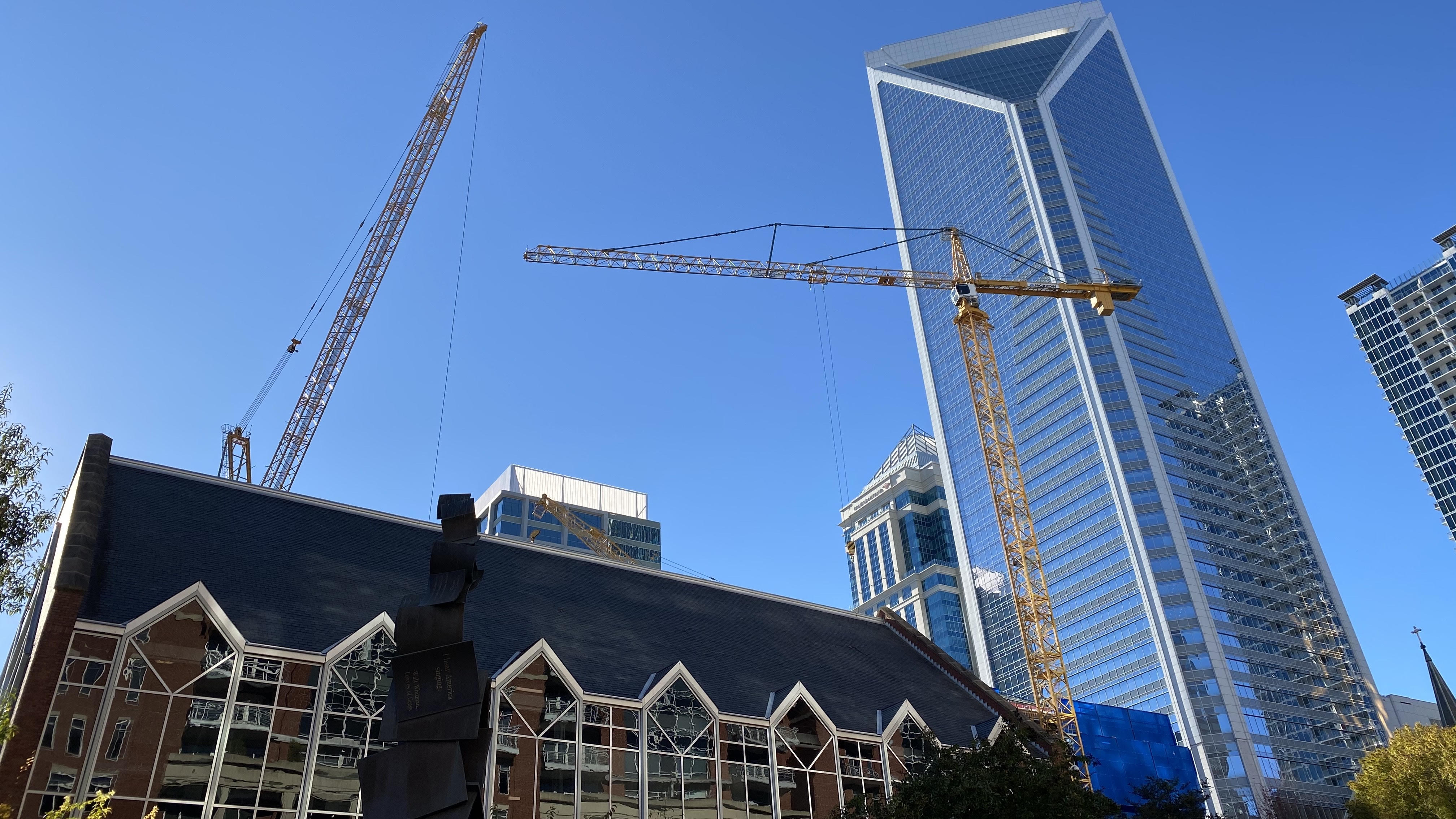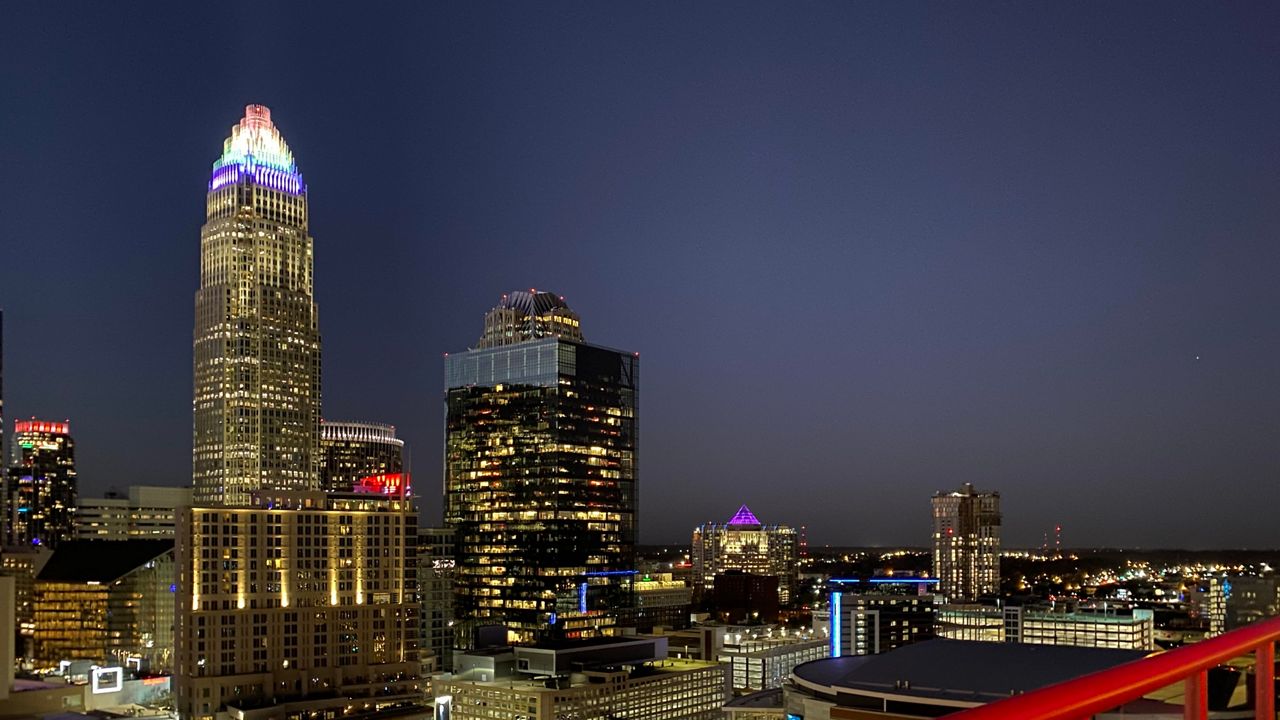CHARLOTTE, N.C. — Twenty years from now, what will Charlotte look like? In large swaths of the city, it’s hard not to turn a corner and see another construction site, especially in areas like Uptown and the South End. Cranes dot the city skyline.
Between now and 2040, city leaders expect 385,000 new people and more than 210,000 new jobs to come to The Queen City, and that doesn’t even include the surrounding towns and suburbs.
The 2040 Comprehensive Plan was just released and will go to City Council for review early next year. It will guide how the city grows and develops in the decades to come.
“The pace of development that continues to happen, it hasn’t slowed. It’s never slowed really,” said Grant Meacci, the city’s interim assistant planning director. “It was kind of like the wild west. Ideas would come up and they would just go do them. There really wasn’t any context for how you were going to do it.”
The point of the new 320-page plan is to create a vision for how Charlotte will look in 20 years. The next big steps include developing what’s called a Unified Development Ordinance, essentially a complete rewrite of the zoning code, and making a map to show what the future of the city will look like.
“It’s a shared vision for growth and development. What that really means is it’s a blueprint for how our communities should grow over time,” Alysian Osborne, with the city’s planning department, said.
“There hasn’t been a plan done like this for almost 50 years. So it’s kind of a big deal,” she said. “We have one document, or one kind of guiding light, that shares how we want to grow in the future.”
“It’s not just about growth and development but about how we engage people,” Osborne said in a recent interview with Spectrum News 1. Osborne and others in the city planning department have been working all along the way to bring in public input to shape the plan.

A big piece of the plan is dedicated to addressing historic wrongs in Charlotte. Addressing the legacy of segregation, redlining and excluding Black residents is prominent in the draft 2040 plan.
“We’re being really intentional about talking about some really hard subjects,” including a history of racial injustice and displacing lower-income people, Meacci said during a recent interview with Spectrum News 1.
“To new residents, Charlotte has offered a balanced quality of life with reasonably priced homes, diverse job opportunities, access to nature, and transportation choices. Yet, for those who were born in this city into a lower-income or African American household, the economic boom has been largely inaccessible,” the plan states in the first pages.
“Charlotte’s rapid growth comes with opportunities, new energy, and increased investment in the city, but it also brings with it additional pressures and strains on existing residents,” according to the new plan.
Growth has led to gentrification in the city and displaced lower-income residents as housing prices have gone up. The history of redlining, when banks and insurance companies excluded Black people from buying homes, has shaped how Charlotte’s neighborhoods have grown to this day, the plan states.
The new plan aims to address these issues through what city planners call an “equitable growth framework.” It’s intended to “help ensure that the costs and benefits of growth and change in Charlotte are distributed more equitably.”
“How do we think more intentionally about equity?” Osborne said. “As we grow, how do we be equitable in that growth so that the entire community benefits from that growth?”
As an example, Osborne explained, the land values in some parts of Charlotte have not grown in the way other areas have. So the question is how to help residents in these neighborhoods see their property values grow as the rest of the city grows.
Another example she gave is mobility and public transit. Looking at something like the light rail lines that only serve parts of the city, the question is, what can Charlotte do for other areas to make sure they have just as easy access to transportation?
“We’re able to integrate some really interesting ideas about how to right some of the past wrongs, whether it’s displacement of African American communities or homelessness,” Meacci said. “I really think we will find solutions to those, where we’ll start to chip away at these inequities that have been baked into our city for a long time.”
“There’s so much capital and wealth that’s here and there are so many people moving here that I think that will to change is pretty strong in Charlotte,” he said.
One of the big pieces Charlotte is trying to tackle, along with most other big cities in North Carolina, is affordable housing.
“It’s hard to catch up,” Meacci said. “We’re behind the curve like every other city is. There’s a lot of desire to fund more of it.”
He said the city is trying new incentives for developers and other programs to bring in more affordable housing options. One big idea is called “inclusionary zoning,” which would require developers to include affordable housing, but that would require changes from the North Carolina General Assembly.
The plan, under a heading for “Big Ideas,” calls on the city to “lead the charge to pass enabling legislation for mandatory inclusionary zoning and implement throughout the community.”
Other cities have lobbied for permission to use inclusionary zoning from the North Carolina General Assembly. Republican majorities in the N.C. House and Senate mean a bill like that would not likely pass in Raleigh.
But the city still has a lot of tools it can use, including incentives for developers and protections for neighborhoods.
“It’s kind of like the kitchen sink. We’re trying a lot of different methods to solve this problem. Somewhere the solution isn’t all of them,” Meacci said. “We haven’t been doing it long enough to see the results.”
Osborne said that during the public input process, she heard a lot from residents about making sure the city has affordable housing options. “We need to think and be more intentional about providing housing diversity and housing options,” she said.
The plan calls for more incentives for developers to include a mix of housing options in new projects and for mixed-income developments. It also states Charlotte should partner with private developers to look for new opportunities to build affordable housing on city-owned land, especially near transit stations.
The new zoning ordinance will help build these incentives and other plans into law.
The city is also looking at how development around transit, like the Lynx Blue Line, can lead to people getting priced out of neighborhoods.
“A big part of that is thinking about affordability, displacement and providing opportunities for those who are in-place now to stay as that investment happens,” Osborne said. That means that as the city plans a new Silver Line light rail, they are actively thinking about affordable housing as part of that plan.
The plans in the new draft also call on the city’s elected leaders to create an ombudsman office “to support developers of affordable housing and the implementation of community benefits from development projects.”



